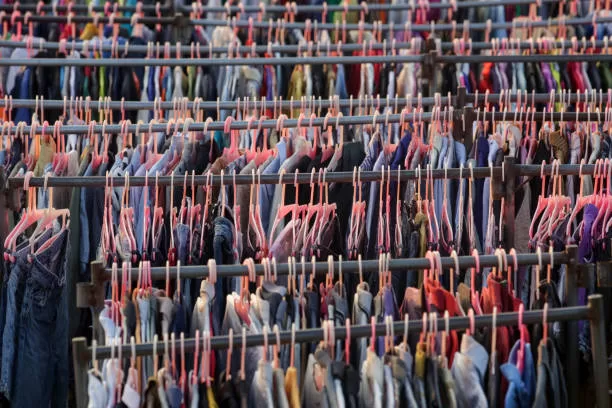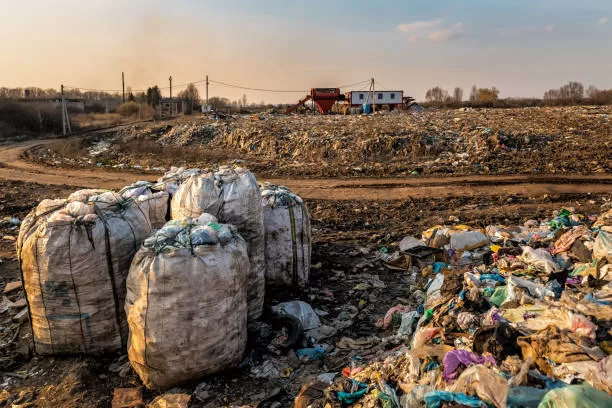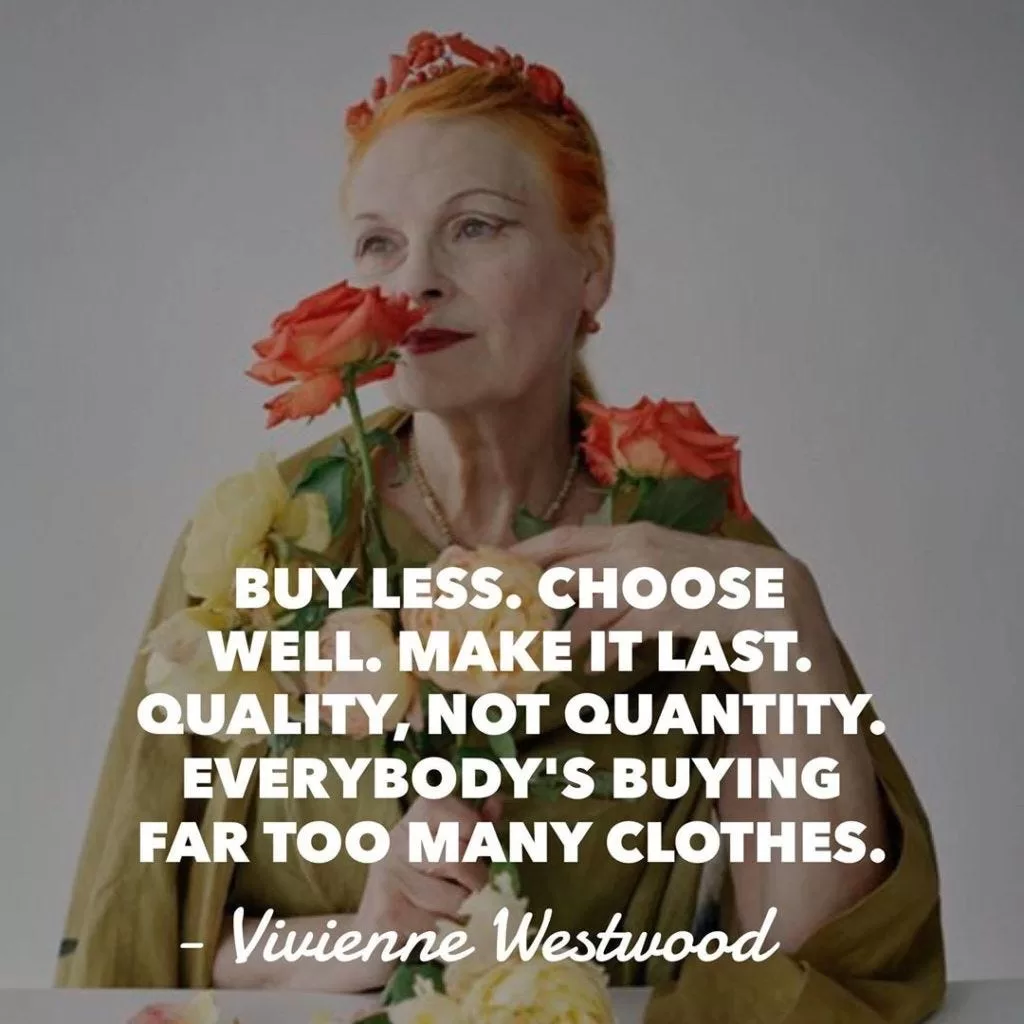The Fashion Trap: Overconsumption, Environmental Consequences,
and EverUsed's Sustainable Solution
In our modern society, the allure of fast fashion has led many of us into a cycle of overconsumption when it comes to clothing. The constant bombardment of advertisements and social media influencers showcasing the latest trends has fueled a culture of always wanting new. We don’t see what is hiding behind closed doors where significant negative impacts cause irreversible damage to our environment. We can’t take back what has been done already, but can we stop or reduce the damage moving forward?

Why We REALLY Buy New Clothing
We are taught to believe that through new clothing, following seasons and fashion trends, we are expressing ourselves whereas we are damaging our planet. We purchase the latest fashions trends which creates a cascade of excitement within our brains. This surge of anticipation triggers the release of dopamine, a neurotransmitter renowned for its role in amplifying sensations of pleasure and gratification.
So, unconsciously, we find ourselves browsing on the internet for a new pair of jeans, shoes, or jacket even if we have a full wardrobe of still good quality clothes. I think we might be drawn to purchase new clothing because we are attached to the feeling and promise of enhancing our personal style and feeling rewarded by the experience.

I always felt a surge of confidence when wearing a new dress on a night out, haven’t you? After the research was done why people continue to purchase more than their need, shows that wearing new clothing can dramatically enhance our self-esteem, confidence, and interpersonal skills. Giving you the confidence of fresh ideas and motivations. I do agree with, but isn’t all a faulty image after all? Is that why brands alluring consumers with new clothing? To make us all to get attached to that feeling no matter how we feel when we wear old clothes?
Sadly, it might be the case. I don’t think we should be attached to the feeling when we buy new clothing, or it should add value to our personality. I still believe that clothing is overrated in that sense.
Moreover, new clothing can sometimes present a chance for transformation and reinvention. With every new ensemble, we wield the ability to embody diverse roles, personas, or facets of our identity. It offers an avenue to delve into fresh styles, dabble in fashion trends, and welcome change. The act of buying new clothes signifies a new beginning and can ignite our aspiration for personal development.
Another point is when customers get the best deals or the cheapest price, the consumer gets a maximum sense of pleasure from the brain. The fast fashion industry understands that and sells cheap products with reduced quality of wearing because the quality is not something that consumers are looking at if the price is pleasurable. The study determined that “While pleasure kicks in just from the act of looking, there’s also pleasure in purchasing, or more specifically, in getting a bargain”. As we noticed, many retailers even artificially inflate their prices so they can drop them later offering 30%, 40%, or up to 50% off the item. Then it makes me wonder, how much the item really costs.
Impact On The Environment
The fashion industry is notorious for its high levels of pollution, excessive water usage, and carbon emissions. From the production of textiles to the transportation of garments, every step in the fashion supply chain contributes to environmental degradation. The extraction of raw materials, such as cotton and polyester, requires vast amounts of water and energy, while the manufacturing process releases harmful chemicals and pollutants into the air and waterways. Additionally, the transportation of clothing products around the globe further increases carbon emissions, contributing to climate change.

However, perhaps the most alarming consequence of overconsumption in the fashion industry is the staggering amount of waste it generates. With the rise of fast fashion, clothing has become increasingly disposable, with many garments ending up in landfills after just a few wears. In fact, it’s estimated that the equivalent of one garbage truck of textiles is wasted every second globally. These textiles take centuries to decompose, releasing harmful greenhouse gases in the process and polluting the surrounding environment.
How The Future Looks If Sales Continue To Soar
In a study conducted by researchers at Sheffield Hallam University, UK, in September 2022, it was found that Generation Z consumers often purchase fast fashion items despite expressing a desire for sustainable clothing, highlighting a noticeable disparity between their ideals and actual behavior.
The study revealed that 90% of participants surveyed admitted to purchasing fast fashion, with only one in six able to identify a brand that produces sustainable clothing. Interestingly, while women were more vocal advocates for sustainable fashion, they were less likely to purchase sustainable clothing. Despite 17% of respondents admitting to weekly fast fashion shopping, a staggering 62% reported doing so monthly, and 11% yearly, leaving only 10% claiming they had never bought from a fast fashion retailer.
Contrary to hopes for a decline in fast fashion demand, data from UK-based market researcher Gitnux, published in March 2023, paints a different picture. The segment’s sales worldwide were valued at $122 billion in 2021, projected to skyrocket to $283 billion by 2030, with a compound annual growth rate (CAGR) of 10.13% from 2023 to 2030.
Kate Fletcher, a professor at the Royal Danish Academy in Copenhagen and Oslo Metropolitan University in Norway, pointed out the longstanding gap between intention and action regarding sustainable fashion. She attributed this partly to the disparity between mental intentions and physical actions, emphasizing the need for a shift towards more heartfelt and embodied decision-making.
Fletcher argues that excessive consumption perpetuates a social trap wherein materialistic desires lead to diminished happiness, prompting further consumption in a vicious cycle. To break free from this trap, she advocates for a paradigm shift towards embracing a minimalist wardrobe and prioritizing quality over quantity.
However, the question remains: Can consumers ever be content with a few capsule pieces in their wardrobe? According to Fletcher, consumers are deeply entrenched in a system of continuous growth, driven by the relentless pursuit of economic expansion. Yet, she highlights the potential for redesigning this system to prioritize healthy communities and vibrant ecosystems over perpetual consumption. By challenging the prevailing logic of endless growth, consumers can play a pivotal role in shaping a more sustainable and fulfilling future.
In essence, achieving this shift will necessitate a fundamental change in both consumer psychology and the fashion industry itself. As Kate Fletcher explains, the prevailing culture of high volumes, overproduction, and overconsumption poses a significant barrier to transformative change within the fashion sector.
A reduction in sales would naturally lead to decreased production volumes. However, the implications for the thousands of jobs in the garment sector remain uncertain, as Fletcher acknowledges.

Nevertheless, it’s clear that the current model is unsustainable, and companies must reassess their practices. Many livelihoods are currently unsustainable, and there is a pressing need for companies to prioritize fair wages and sustainable production practices, particularly in light of the devastating impacts of climate change.
Interestingly, emerging research suggests that embracing a slower approach to fashion consumption could have profound implications for consumer well-being. Dr. Lis Ku, a senior lecturer in psychology at De Montfort University, is conducting a study that explores the relationship between slow fashion consumption and individual well-being. Preliminary findings indicate that slow fashion consumption is associated with a greater sense of engagement and overall eudemonic well-being, echoing similar research conducted in China.
She elaborates on how psychology incorporates the ‘self-determination theory,’ which identifies three inherent needs: autonomy (the feeling of having choice and freedom), mastery (the sense of developing abilities and controlling our environment), and relatedness (the feeling of connection to others, including our community). According to her, when these needs are fulfilled, we flourish; however, if they are obstructed, we may seek indirect means to fulfill them.
She emphasizes that slow fashion is closely linked to autonomy because consumers often express a sense of liberation from the ‘dictatorship’ of fashion trends. Additionally, bespoke clothing enables them to participate in the design and production process, further reinforcing their autonomy.
SOLUTION
So, what can we do to break free from this cycle of overconsumption and reduce the environmental impact of our clothing choices? One solution is to embrace the concept of slow fashion.
- Slow fashion encourages consumers to invest in high-quality, timeless pieces that are designed to last. By opting for durable clothing items, we can reduce the need for constant replacements and minimize our overall consumption.
Another effective way to combat overconsumption is by embracing second-hand shopping.
- Platforms like EverUsed which I use, provide a great solution for individuals looking to give their pre-loved clothing a new lease on life. By listing your used clothing online, you can extend the lifespan of garments and divert them from landfills. Buying second-hand reduces waste and promotes a more sustainable and circular economy. At EverUsed I have found many sustainable items, meaning that the brands are supporting sustainable material sourcing, fair trade, and sustainable supply chain. This is the main reason I have chosen to use EverUsed because the majority of the marketplaces sell pre-loved fast fashion items.

Everused Instagram profile post https://www.instagram.com/everusedshop/
Additionally, we can support brands that prioritise sustainability and transparency in their supply chains.
- Look for certifications like Fair Trade or organic cotton, and choose brands that are committed to reducing their environmental footprint. By supporting ethical and eco-conscious brands, we can help drive positive change within the fashion industry and encourage others to do the same. Here is the list that I found of the brands:
Education also plays a crucial role in reducing overconsumption.
- By raising awareness about the environmental and social impacts of the fashion industry, we can empower consumers to make more informed choices and advocate for change. Encouraging discussions about the true cost of fast fashion and the benefits of sustainable alternatives can help shift consumer behavior towards more responsible consumption habits. On Everused platform, I have found many educational articles, information, and encouragement to use sustainable packaging.
Final thoughts
The overconsumption of clothing has serious consequences for the environment, but there are steps we can take to mitigate its impact. By embracing slow fashion, shopping second-hand, supporting sustainable brands, and spreading awareness, we can all play a part in creating a more sustainable and equitable future. Also, using platforms like EverUsed, reducing overconsumption, and promoting a more circular economy has never been easier. Let’s break free from the fashion trap and work towards a brighter, more sustainable future for all.



